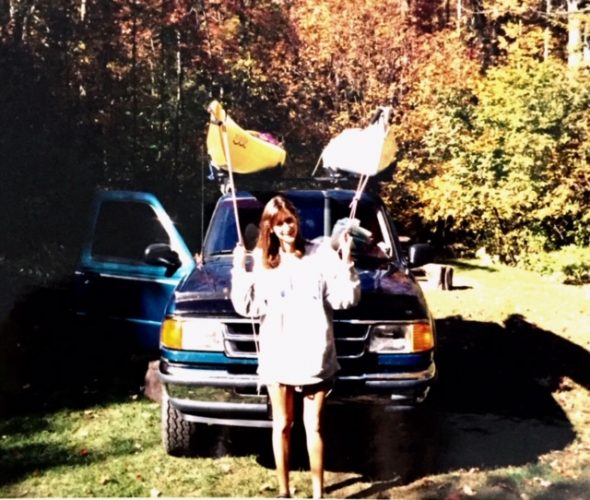 Circa 1995: We unloaded Mitch’s Sea Lion and my Scimitar from Mitch’s teal Ford Ranger, carried them close enough to the water that it was lapping at their bows, and set them down on the gently sloping, rock-strewn beach with sand the color of brown sugar. Next we unloaded all of our gear into mountainous piles on the pavement beside the pickup. Then we took our brand new roll of garbage bags (we’d sprung for the heavy-duty ones) and began bagging up our gear.
Circa 1995: We unloaded Mitch’s Sea Lion and my Scimitar from Mitch’s teal Ford Ranger, carried them close enough to the water that it was lapping at their bows, and set them down on the gently sloping, rock-strewn beach with sand the color of brown sugar. Next we unloaded all of our gear into mountainous piles on the pavement beside the pickup. Then we took our brand new roll of garbage bags (we’d sprung for the heavy-duty ones) and began bagging up our gear.
In our excitement for our first kayak camping trip, two nights of island hopping off the Maine coast, we’d brought a ton of gear. We filled up bags, shoved them into bows and sterns, pulled them out, burped air bubbles, and jammed them back. More than an hour later, our hatches were filling, but we hadn’t made a dent in our mountains. We paused to stretch our backs and study our piles. We’d have to cull.
As we debated what we could live without (the liter of wine had to go along, but maybe I didn’t need my camp chair), a Subaru approached the launch with two kayaks on its roof. It parked, a couple got out, and, with the low profile of the Subaru, didn’t even have to stretch to unload their sleek, fiberglass kayaks. They walked back to their car once, twice, three times—carrying three or four pre-packed dry bags with each trip. These slick new inventions (we’d never heard of dry bags before) slid into their appropriate hatches like shells in a shotgun.
But these fancy paddlers were wearing jeans and T-shirts. Smugly and silently we chastised them for not dressing appropriately for the 50 degree water temperature. Any kayaker should know to dress for the water and not the air. That morning, I’d shoe-horned myself into my suffocating wetsuit before leaving the hotel. Maine was having a rare, mid-October heat wave and the air temperature had climbed to 80 degrees. I had been sweating for hours.
The couple moved their car to a different spot and returned moments later dressed in loose, comfortable-looking, paddling jackets and spray pants. Then they slid their kayaks into the water and paddled away. The whole thing took about 15 minutes.
After we closed our gaping mouths, we continued to bag and stuff. Unnoticed by us, the entire time we’d been packing, the tide had been going out. Our mouths dropped once again, when, finally finished, we looked up to find that the water had receded over twenty yards. Quite a tide change. Yet dragging fully loaded boats a quarter of a football field over a rocky beach was still not a hard enough lesson for us to appreciate Maine tides. We’d have to learn it a few more times before our trip was over (next post).
The sun edged close to the horizon by the time we finally paddled away from shore looking not at all sleek and professional, but more like two garbage barges heading for a landfill.
While our garbage bags did the trick (we triple-bagged our clothes and sleeping bags) they weren’t efficient and we had to be very careful not to snag them. Before our next trip, we invested in dry bags. But we made another mistake by buying huge ones and stuffing them full. They only fit in the cockpits after removing half the contents.
Final Lesson: Lots of small and medium dry bags are the key to packing a kayak.

After our first night camping. Now we gotta get all those garbage bags back in the boats.
by: Jenifer Adams-Mitchell
